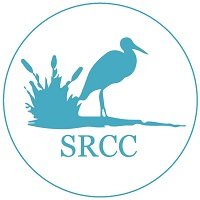Oysters Rediscovered in Shark River Bay
It has been a long time since native oysters have been sighted in Shark River Bay. Oyster populations in New Jersey’s bays and estuaries have been ravaged by historic over-harvesting, pollution, disease, and habitat degradation, so to see signs of their return is encouraging. At this time it’s important to review what the apparent return of oysters may mean for conservation efforts in Shark River.
Eastern Oysters (Crassostrea virginica) are a keystone species, meaning they are an integral part of a healthy marine ecosystem. Oysters, unlike many other shellfish species, need a hard substrate anchor surface to hold onto as they grow to form reef beds, and this is an essential part of their lifecycle. Oyster beds can provide a beneficial reef habitat for muscles, barnacles and other marine creatures. This helps increase biodiversity and serves as a food source for many fish and crab species enjoyed by fishermen, boaters, and naturalists in New Jersey's coastal waters. Oyster reefs can also help to protect shorelines by mitigating the effects of waves, boat wakes, and storms.
In addition, oysters play a special role in cleaning the water in estuaries and bays like Shark River. Oysters filter plankton, nutrients, chemicals, and other pollutants from the water. A single adult oyster can filter up to 50 gallons of water each day, which can contribute to improved water quality. The same is true for other shellfish such as mussels and mud clams, although neither one is nearly as crucial in providing shelter and habitat from reef formation.
The return of these oysters, if sustained, can reinvigorate the ecosystem and clean the water naturally through filtration. However, that filtration is the same reason that the harvesting of shellfish for human consumption is restricted in Shark River and other estuaries along the NJ Shore, due to documented bacterial contamination (see more at https://dep.nj.gov/wms/bmw/national-shellfish-sanitation-program-nssp/). Our hope is that efforts to identify and address the potential sources of bacterial contamination will someday enable the lifting of these restrictions. To learn more about the SRCC’s Community Science program’s efforts to identify point source contamination; please visit: www.sharkrivercomsci.org .
For more information about Eastern Oysters, go to:
https://www.littoralsociety.org/operation-oyster.html
https://dep.nj.gov/njfw/conservation/eastern-oyster-conservation/
https://www.cbf.org/about-the-bay/chesapeake-wildlife/eastern-oysters/oyster-fact-sheet.html
A section of the sighted oyster colony in Shark River. (Photo by Evan DeAngelis)

